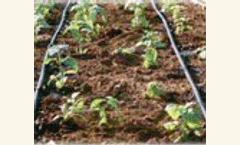Crop Yield Forecasting Articles & Analysis: Older
6 articles found
The integration of agricultural data analytics into farming practices has become increasingly essential. This approach, often termed “smart farming” or “precision farming” uses farm-level data to enhance productivity, sustainability, and profitability. In India, where agriculture is a vital sector supporting the livelihood of millions, the strategic use of data can ...
The impact of potential future climate change scenarios on the irrigation water requirements (IRRs) of two major agricultural crops (coffee and seed corn) in Hawai'i was studied using the Irrigation Management System (IManSys) model. In addition to IRRs calculations, IManSys calculates runoff, deep percolation, canopy interception, and effective rainfall based on plant growth parameters, site ...
Previous research has demonstrated the importance and statistical significance of the photothermal quotient (PTQ) to predict and explain wheat (Triticum aestivum L.) yields. The objective of this study is to respecify PTQ to enhance the explanatory power of statistical models used to explain grains per square meter (GM–2), and increase understanding of weather's impact on ...
This article introduces the FAO crop model AquaCrop. It simulates attainable yields of major herbaceous crops as a function of water consumption under rainfed, supplemental, deficit, and full irrigation conditions. The growth engine of AquaCrop is water-driven, in that transpiration is calculated first and translated into biomass using a conservative, crop-specific parameter: the biomass water ...
This paper aims to assess the strength and weaknesses of information and data collection on food security and the existing market information system, identify gaps in the early warning system of impending food security disasters, and analyse the capacity to forecast yield and crop production and identify the gaps. Finally, the paper concludes ...
Field floral phenological data were used to determine the anthesis phase, to ascertain which period of the pollination records should be included in the models. Forecast models indicated that annual prepeak pollen index (PI) was the variable most influencing the final olive crop. ...





